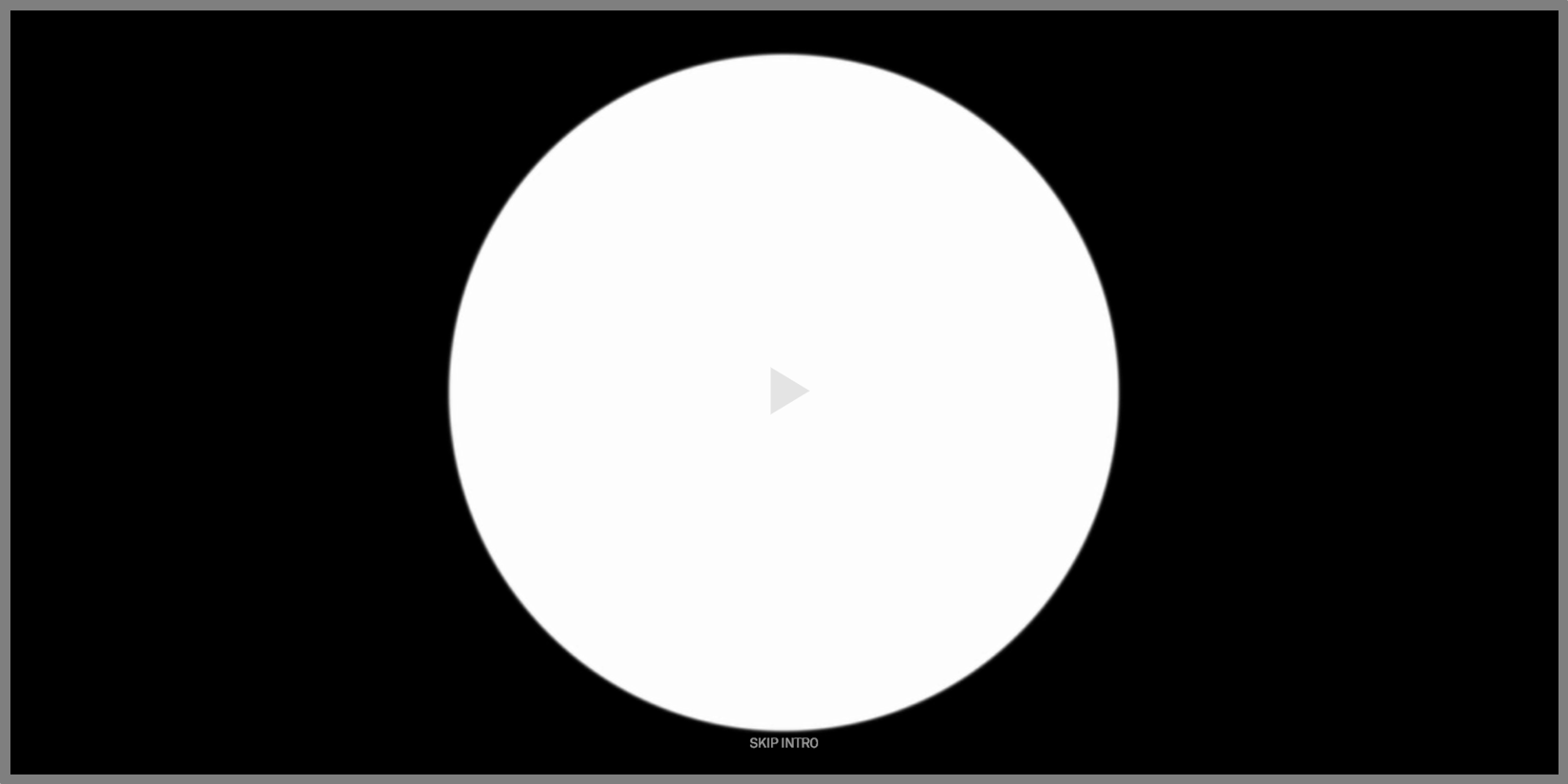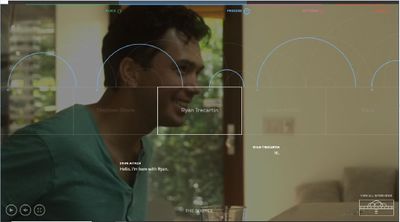"The Source"의 두 판 사이의 차이
red
(→How 어떻게) |
(→How 어떻게) |
||
| 144번째 줄: | 144번째 줄: | ||
! '''What you have is a circular pavilion'''. It’s like a pie almost, divided into six parts. '''When one walks in, there are six films playing''', all with their own audio, ( 중략) It allows you to walk in and, if you’re engaged with Liz Diller talking about architecture, you can be '''''immersed''''' in that, and you can '''step into that section of the installation and follow that thread'''. The '''physical installation is mirrored in the website that we’ve designed'''. As you navigate it, you can find certain ideas and follow those ideas if you wish. Imagine if you are listening to Jacques Herzog talking about chaos, and you say, I’m kind of interested in that thread, so you follow “chaos” and it leads you to Ryan Trecartin. | ! '''What you have is a circular pavilion'''. It’s like a pie almost, divided into six parts. '''When one walks in, there are six films playing''', all with their own audio, ( 중략) It allows you to walk in and, if you’re engaged with Liz Diller talking about architecture, you can be '''''immersed''''' in that, and you can '''step into that section of the installation and follow that thread'''. The '''physical installation is mirrored in the website that we’ve designed'''. As you navigate it, you can find certain ideas and follow those ideas if you wish. Imagine if you are listening to Jacques Herzog talking about chaos, and you say, I’m kind of interested in that thread, so you follow “chaos” and it leads you to Ryan Trecartin. | ||
| − | + | ||
| + | '''You could walk in, and stand in the middle and see six screens, and hear this kind of polyphony of voices'''. Or you could '''walk over and just be with that one person, and sit through that one person’s world of ideas, hearing it, really, in their own voice'''. So '''I wanted that sense of empowerment for the viewer'''. I’m not a journalist, I’m not on television; I’m used to making artwork. So '''I wanted something that would empower the viewer to really make their own story''', or '''allow them author their own experience''', out of everything that we’ve harvested for the project. | ||
| + | |||
| + | |||
| + | So the website will launch this week, (중략) If you find yourself '''listening to a certain conversation with someone and a certain idea has come to the surface''', on the site, '''you could follow that idea,''' and that will '''lead you through all the different times with different people that subject was explored'''. For example, you mentioned chaos. So, it might go from Ryan Trecartin talking about chaos, to Mike Kelley talking about chaos, to Tilda Swinton, to someone else, to someone else. So at its best, on the site, you can really create your own film out of the ideas that you’re most interested in. | ||
|- | |- | ||
| − | | | + | | 전시와 웹사이트에서의 데이터 열람의 구현은 다르게 이루어졌다. |
|- | |- | ||
| − | | | + | | 전시에서 '''필연적으로 딸려오는 공간성'''을 활용해 사람들이 '''선택적으로 창작자의 이야기에 집중'''할 수 있도록 했다. 6면으로 나뉜 원형의 공간의 가운데에 서면 6명의 창작자들의 말을 동시에 들을 수 있었으나 그 중 하나르 선택하면 한 명의 이야기에 '''몰입'''할 수 있었다. <ref> 더불어서 스레드(thread)도 이용 가능하다고 하는데 이는 인터뷰마다 언급이 달라서 발표에서 자세히 다루지 않도록 하겠다. </ref> |
| + | |- | ||
| + | | 웹사이트에서는 공간성이 없기에 '''키워드로 연결되는 스레드(thread)'''를 활용했다. 한 창작자의 이야기에 온전히 몰입하다가 '''그의 어떠한 지점'''(창작의 단계 - 혼란, 과정, 공간 등)에 '''좀 더 깊이 있게 알고 싶다면''' 관련 '''키워드의 연결망을 통해 다른 창작자의 내용으로 바로 연결해 들을 수 있다.''' (키워드의 수와 어떤 키워드가 있는지는 창작자와의 인터뷰마다 다르며 각 키워드에 해당하는 내용의 길이도 각기 다르다.) | ||
|} | |} | ||
| + | |||
| + | [[파일:Thesourcewebsite1.JPG | 400px ]] [[파일:Thesourcewebsite2.JPG | 400px ]] | ||
==='''Comment''' <small>'''논평'''</small>=== | ==='''Comment''' <small>'''논평'''</small>=== | ||
2020년 9월 22일 (화) 22:02 판
Who 누가
더그 앳킨 (Doug Aitken)
미국 아티스트. 예술가. 동시대 예술가(contemporary artist).
비디오, 사진, 조각, 공연 등을 복합적으로 적용한 종합 예술을 주로 제작한다.
영화 스크린을 '매우 고전적인(too classical)' 것으로 치부하여 영화 경험을 '현대식'으로 재해석하는 작품을 자주 제작한다.
1990년대부터 다수의 스크린에서 이미지들이 동시에 재생되는 작품들을 다수 제작한다. (The source의 실제 전시도 동일하게 진행)
더그 앳킨에 대해 더 알아보기
더그 앳킨의 생애와 작품 목록
When & Where 언제 그리고 어디서
본래는 전시를 목적으로 한 예술 작품이었다.
2012. 테이트 미술관[1]. 리버풀. 영국. (2012. Tate Liverpool. Liverpool. UK.)
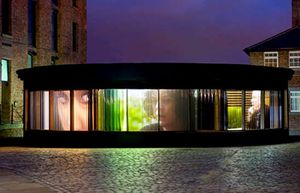
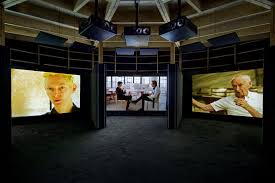
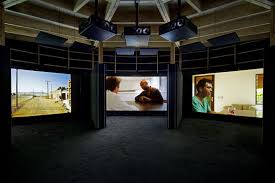
전시 : 밤의 모습과 낮의 모습. 낮 동안은 실내 전시로. 밤에는 유리에 투과하는 영상의 노출하는 방법으로 전시의 형태가 바뀐다.
2014. 선댄스 영화제. 유타 주. 미국. (2014. The Sundance film festival. Park City. Utah. United States(USA).)
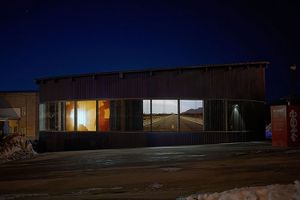
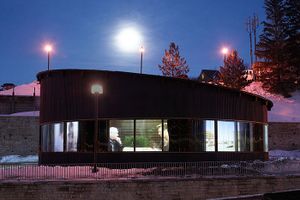
이후 2014년 선댄스 영화제(The Sundance film festival)에서 인터뷰들이 보강된 작품을 한 번 더 선보이기도 하였다. [2]
선댄스 영화제에서도 테이트 박물관에서와 동일하게 가건물이 설치되었고 낮과 밤의 체험이 다르게 구현되었다.
The Source 웹페이지는 선댄스 영화제에 출품할 당시(2014년 1월) 전시와 함께 오픈되었다.
What & Why 무엇을 그리고 왜
작품에서는 제작의 대상과 목적을 다음과 같이 밝히고 있다.
무엇 : 대화와 인터뷰 conversations and interviews
| 창조적인 개인들과의 인터뷰를 통해 창작의 시작에 대한 논의를 진행한다. '창조'의 과정은 어떻게 촉발되며 창작을 위해서는 어떠한 과정을 거치는지에 대한 대화를 주고받는다. |
|---|
| 더그 앳킨은 The Source에서 수십 명의 창작자들과 나눈 대화를 4분짜리 인터뷰로 압축해 제공한다. 그는 '창작의 순간을 포착하고 영상으로 박제하기 위해(capture the moment and freeze into a film)' 인터뷰를 만들어 보고 싶었다고 밝힌 바 있다. [3] |
더그 앳킨은 사이트에 총 23명의 예술가들과의 인터뷰를 수록해 놓았는데 그 대상과 종사 분야는 다음과 같다.
| 이름 | 직업 | 이름 | 직업 | 이름 | 직업 | 이름 | 직업 |
|---|---|---|---|---|---|---|---|
| Aaron Koblin | 예술가, 프로그래머 | Alice Waters | 요리사 | Beck | 음악가 | David Adjaye | 건축가 |
| Devendra Banhart | 음악가 | Jack Pierson | 사진가 | Jack White | 음악가 | Jacques Herzog | 건축가 |
| James Murphy | 음악가 | James Turrell | 예술가 (빛, 공간) | Liz Diller | 건축가 | Liz Glynn | 예술가 (설치, 조각) |
| Mike Kelley | 건축 사진가 | Paolo Soleri | 건축가 | Philippe Parreno | 예술가 (복합[4]) | Richard Phillips | 화가 |
| Ryan Trecartin | 비디오 예술가, 영화 제작자 | Stephen Shore | 사진가 | Theaster Gates | 설치 예술가 | Thomas Demand | 사진가 |
| Tilda Swinton | 배우 | William Eggleston | 사진가 |
왜 : 창조의 근원 탐구 exploring the starting point of creativity
| The Source는 '매체간 대화'를 생성한다. 개인들이 자신들의 창조 과정과 경험에 관해 솔직히 이야기함으로써 시작에서 깨달음으로 경험을 전이한다. |
|---|
| 이 문장을 이해하기 위해서는 먼저 더그 앳킨의 '예술적 가치관'에 대해 이해할 필요가 있다. 그는 문화와 예술의 경계짓기를 대단히 거부한다. [5] 그는 다른 사람과의 대화를 보라 말한다. 다른 이들과 '예술'에 대해 말할 때 우리는 '영화', '회화', '음악' 하나만을 결코 말할 수 없고 대화의 주제는 하나의 예술에서 다른 것으로, 하나의 영감에서 또 다른 것으로 옮겨 간다. 예술을 자본주의적인(capitalistic) 현실에서만 갤러리, 공연장, 박물관 등의 공간적 분할이 있을 뿐, 실제 우리의 사고 체계에서는 그러하지 않으며 모든 예술은 상호적으로 양분을 주고 받는 관계(cross-pollinating)이다. |
| 이는 대단히 포스트 모더니즘적인 사고 체계이며 대중 예술로 도래한 현재의 상황을 여실히 보여 주는 동시대 예술가의 발언이라 생각한다. |
이 외에도 앳킨은 인터뷰에서 '창조의 근원을 탐구하는 것'에 대해 몇 가지를 덧붙인다.
| if you look back you recognize that there were a few conversations that you had with people you were fascinated by.
|
|---|
| 앳킨은 창조의 시작은 언제나 누군가와의 대화였다는 자신의 경험에 근거해 여러 창작자들과의 대화를 통해 창조의 시작에 대해 탐구한다. 아무것도 시작되지 않았던 시간으로 되돌아가 영감의 순간에 대해 이야기를 나누며 형식과 각종 미학 이론에서 탈피한, 순수한 아이디어(pure idea) 그 자체를 포착하고 싶어 했다. 더불어 그는 자신의 작품을 통해 다른 예술가들이나 일반 대중들 역시 '영감'의 순간을 공유하길 바란 것으로 보인다. |
How 어떻게
인터뷰 제작 관련 making interview
| I’ve been working on it for maybe three or four years.
|
|---|
| 앳킨은 한 인터뷰 대상자별로 몇 시간 정도 인터뷰를 녹화한 후 자신이 생각하는 '창조의 핵심(영감의 키워드. the essence)'만을 추릴 때까지 내용을 끊임없이 소거해 4분짜리 영상을 제작했다. 따라서 10,000시간이 넘게 작업을 했음에도 현재까지 100분도 안 되는 결괴물을 제작했다. 그는 초기 작업에만 3-4년을 투자했으며 앞으로도 지속적으로 내용을 추가해 웹페이지에 업로드할 예정이라고 밝혔다. |
주제의 도출 finding the essence[9]
| you find that there are certain things that kind of recur, certain ideas that come up again and again in different ways. For me, that was kind of amazing, because there’s this complete spectrum of chaos and order that people look to, to frame their work, or to use as a process. (중략) It’s interesting that there are these different ideas that are in the air, that are used by a lot of people, but all of them in a very personal way. That was the thing that surfaced out of the project,
The Source, that surprised me.
|
|---|
| 앳킨은 창작자들의 인터뷰에서 반복적으로 나타나는 특성에 주목했다. 그는 그것들을 하나의 키워드로 묶었다. |
| 주의해야 할 것은, 그가 언급한 반복적인 특성이 동일한 흐름만은 아니었다는 것이다. 위 글에서도 확인할 수 있듯, 그는 같은 형태의 혼란과 다른 형태의 과정이 반복적이었다는 것을 언급한다. 많은 창작자들에게 혼란은 창조의 근원이 되었으나 혼란에서 출발한 그들의 작업 과정은 각기 달랐다. 혼란에서 과정으로 이양되는 흐름이 반복되었을 뿐 과정의 구체적인 단계는 각기 달랐다. |
| 따라서 앳킨은 창작자들에게 동일하게 나타나는 단계를 키워드로 묶어 같거나 다른 경험을 공유하고자 했다. |
주제 전달 관련 conveying the topic and intention
| What you have is a circular pavilion. It’s like a pie almost, divided into six parts. When one walks in, there are six films playing, all with their own audio, ( 중략) It allows you to walk in and, if you’re engaged with Liz Diller talking about architecture, you can be immersed in that, and you can step into that section of the installation and follow that thread. The physical installation is mirrored in the website that we’ve designed. As you navigate it, you can find certain ideas and follow those ideas if you wish. Imagine if you are listening to Jacques Herzog talking about chaos, and you say, I’m kind of interested in that thread, so you follow “chaos” and it leads you to Ryan Trecartin.
|
|---|
| 전시와 웹사이트에서의 데이터 열람의 구현은 다르게 이루어졌다. |
| 전시에서 필연적으로 딸려오는 공간성을 활용해 사람들이 선택적으로 창작자의 이야기에 집중할 수 있도록 했다. 6면으로 나뉜 원형의 공간의 가운데에 서면 6명의 창작자들의 말을 동시에 들을 수 있었으나 그 중 하나르 선택하면 한 명의 이야기에 몰입할 수 있었다. [10] |
| 웹사이트에서는 공간성이 없기에 키워드로 연결되는 스레드(thread)를 활용했다. 한 창작자의 이야기에 온전히 몰입하다가 그의 어떠한 지점(창작의 단계 - 혼란, 과정, 공간 등)에 좀 더 깊이 있게 알고 싶다면 관련 키워드의 연결망을 통해 다른 창작자의 내용으로 바로 연결해 들을 수 있다. (키워드의 수와 어떤 키워드가 있는지는 창작자와의 인터뷰마다 다르며 각 키워드에 해당하는 내용의 길이도 각기 다르다.) |
Comment 논평
자료 단독 논평
사용자 경험(UX)에 대한 단상:The Conversation과의 비교
- ↑ 테이트 미술관 : 영국의 현대 미술관 (키스 해링 Keith Haring 작품 전시도 하는 등 동시대 현대 예술가들의 작품이 전시되는 곳)
- ↑ 테이트전 때보다 현재 웹페이지의 형태와 더 유사하다.
- ↑ 뉴욕타임즈와의 인터뷰 중 발췌. https://tmagazine.blogs.nytimes.com/2014/01/16/q-and-a-doug-aitken-unveils-the-source-a-collective-meditation-on-the-nature-of-creativity/
- ↑ 비디오, 그림, 사진, 글, 설치 등을 복합적으로 예술로 삼는 사람들에게 '복합' 표시를 하였다.
- ↑ 실제 인터뷰를 통해서도 이와 관련된 대목들이 여러번 포착되는데 뉴욕 타임즈(New York Times)와의 인터뷰에서는 '통제(regimentation), 분열(division)', 인터뷰지와의 인터뷰에서는 '문화 분리/단절(cultural segregation)'이라는 용어는 현실에서는 작동할 수 없는 논리라고 언급한다.
- ↑ 뉴욕타임즈와의 인터뷰. 주소 위와 동일
- ↑ 인터뷰지(Interview)와의 인터뷰 중 발췌. https://www.interviewmagazine.com/art/exclusive-preview-and-interview-the-source-evolving-doug-aitken
- ↑ 테이트 박물관 인터뷰 중 발췌. 위 수록 영상.
- ↑ What에 해당되는 내용이지만 맥락상 How가 더 잘 어울려서 이곳에 배치했습니다.
- ↑ 더불어서 스레드(thread)도 이용 가능하다고 하는데 이는 인터뷰마다 언급이 달라서 발표에서 자세히 다루지 않도록 하겠다.
